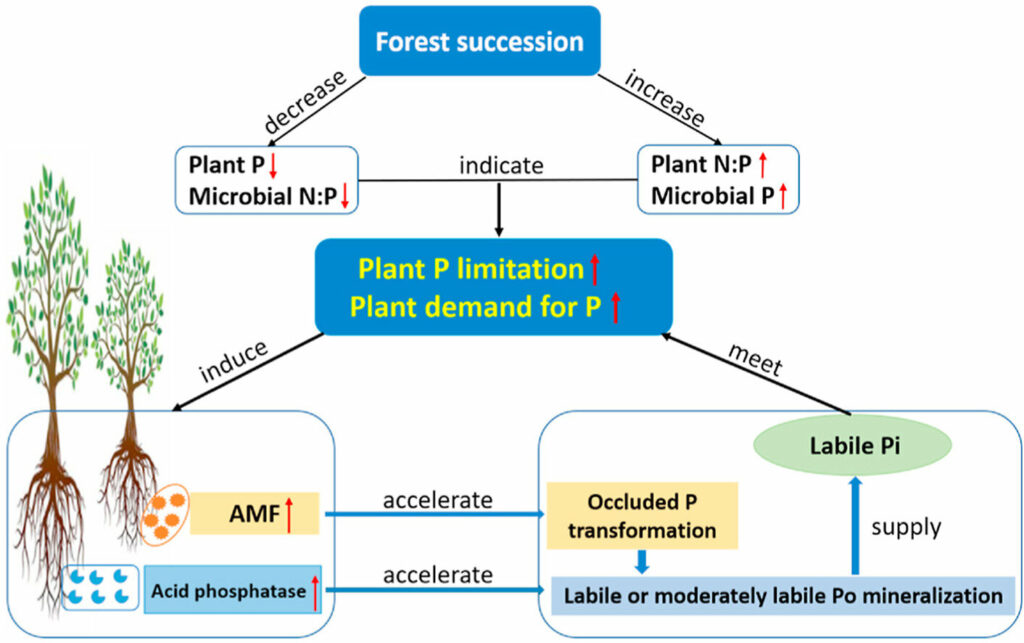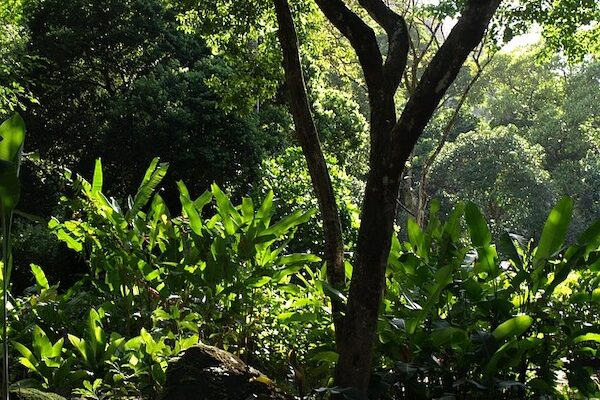Researchers from the South China Botanical Garden of the Chinese Academy of Sciences have revealed a potential mechanism of phosphorus acquisition by plants during succession of subtropical forests, according to a study recently published in Soil Biology and Biochemistry.
The researchers reported that mycorrhizal fungi and phosphatase involvement in rhizosphere improves plant nutrition during subtropical forest succession.
Phosphorus availability is a limiting factor for plant growth in tropical and subtropical regions, but many tropical and subtropical forests maintain high levels of productivity and biodiversity under phosphorus-limited conditions, which seems to be a paradox between phosphorus limitation and huge productivity.
Before this study, they have found that the key roles of solid-phase unstable/labile inorganic phosphorus and moderately labile organic phosphorus rather than the traditionally known water-soluble phosphorus in soil phosphorus transformation and phosphorus supply.
They addressed this by collecting leaf and rhizosphere soil samples of the dominate tree species at early, mid and late successional stages and quantifying phosphorus concentration, microbial biomass phosphorus, chemically-extracted phosphorus forms, acid phosphatase activity, biomass of arbuscular mycorrhizal fungi (AMF) and ectomycorrhizal fungi.
According to the researchers, plants are more phosphorus limited, while microbes are less phosphorus limited during forest succession.

Occluded phosphorus decreased while organic phosphorus in the rhizosphere increased with forest succession. The decrease of the proportion of occluded phosphorus in the rhizosphere soil was negatively correlated with the increase of AMF biomass, while the increase of organic phosphorus and moderately labile phosphorus was positively correlated with the increase of AMF biomass, but negatively correlated with the increase of acid phosphatase activity during forest succession.
They proposed a mechanism at species level for phosphorus availability in subtropical successional forests based on AMF processes that increase the transformation of occluded phosphorus to labile and moderately labile organic phosphorus forms, followed by acid phosphatase activity that converts the hydrolysable organic phosphorus into inorganic phosphorus. Transformation of occluded phosphorus and organic phosphorus fractions in the rhizosphere to plant-available phosphorus will satisfy the increasing phosphorus demand of plants during forest succession.
In addition, their recently earlier study at plot level has showed an alternative mechanism that soil microbial and chemical processes act closely together to maintain a higher level of potential labile phosphorus proportion. This phenomenon is especially pronounced in the late successional old-growth forest, suggesting that phosphorus cycling is more active and efficient at late than early succession forests.
“These findings help to uncover the mystery of how tropical and subtropical forests developed under phosphorus-limited conditions and maintained high levels of productivity and biodiversity. Meanwhile, future research on the strategy and mechanisms for forest plants to overcome low available phosphorus, perhaps is equally or even more important than phosphorus limitation itself, because the reality is that in nature, many forests have thrived millions of years in tropical and subtropical regions which are one of the highest level of productivity and richest species on the planet,” said WEN Dazhi, the lead author of the study.
Read the paper: Soil Biology and Biochemistry
Article source: Chinese Academy of Sciences
Author: ZHANG Nannan








